Independent Collectors
Patrizia Sandretto Re Rebaudengo
Italian art collector Patrizia Sandretto Re Rebaudengo talks to Agnese Čivle about spontaneous art buying, the difference between collecting names and works and her Turin-based art foundation.

Perfect makeup and classically-cut clothes, always accessorized with fine American costume jewellery from her own collection – which consists of more than 5 hundred pieces made in the 1930-s to up today by the jewelers Trifari, Marcel Boucher, Coro, De Rosa, Eisenberg and Kenneth J. Lane. Everlasting youth, an overflow of energy, and disarming sincerity… Something about her persona reminds me of the iconic creature that was the Princess of Wales. But this is Patrizia Sandretto Re Rebaudengo from Italy, art collector and patroness of the arts. She is frequently seen accompanied by one or two handsome young men – her sons. And so is the case on the day that we meet at the Vienna art fair – this unbreakable familial code of the Italians!
Sandretto Re Rebaudengo’s art collection is housed in Turin, in the northwest of Italy. She began to assemble her collection of international contemporary art in the early nineties, and it now contains over 1000 pieces made between 1970 and the current day. Paul McCarthy, Thomas Ruff, Fischli&Weiss, Anish Kapoor, Damien Hirst, Cindy Sherman and Maurizio Cattelan are just some of the big names to be found in her collection. Highlights from the Sandretto Re Rebaudengo art collection are regularly shown in museums and exhibition halls throughout the world, including at such esteemed institutions as London’s Tate and New York’s MoMA. In 2013, parts of the collection were exhibited at London’s Whitechapel Gallery, as well as in the Austrian city of Krems and in Torun, Poland.
A well-known performance that came about with the help of the Sandretto Re Rebaudengo Foundation was the four-hour-long performance of the ship, the S.S. Hangover, drifting back and forth across the waters of Venice; created by Icelandic artist Ragnar Kjartansson, it could be seen and heard from the banks of the Arsenal shipyard during the 55th Venice Biennale. The non-profit Sandretto Re Rebaudengo Foundation was established in 1995, and under the leadership of it’s current artistic director, Fancesco Bonami, the esteemed Italian curator and art historian, it supports various contemporary art initiatives as well as emerging artists, art critics and curators.
AGNESE ČIVLE
What is it that has kept your hand upon the pulse of contemporary art for more than twenty years now?
PATRIZIA SANDRETTO RE REBAUDENGO
Contemporary art is the only art to which we can still be witness. It lets us watch art as it is being created, and allows us to forge personal relationships with the artists and to forecast their future development. That is the unique aspect of collecting contemporary art!
AGNESE ČIVLE
What was the very first work you bought for your collection? Do you remember your emotions at the time?
PATRIZIA SANDRETTO RE REBAUDENGO
In 1992 I bought four works, all by Italian artists: Carla Accardi, Tano Festa, Mario Merz and Salvatore Scarpitta. They were contemporary works, produced around the late fifties and early sixties. I enjoyed the idea of starting a collection with works produced around the year I was born. I remember looking at those paintings on the wall with interest, and they almost spoke to me; I really felt as if they belonged to me. My tastes and interest in contemporary art has broadened since then, but this was my initial approach to contemporary art.
AGNESE ČIVLE
Did you collect something else before art? Maybe stamps, or empty lipstick tubes – as a child?
PATRIZIA SANDRETTO RE REBAUDENGO
I think that collecting is part of my DNA. As a girl, I used to collect small vintage pillboxes, which I would number and list in an exercise book. I have also been collecting costume jewelry since the 1980’s. I was fascinated by the elegant designs and simple materials used to produce the pieces, although it was only when I started reading about the history of costume jewellery that I became very passionate about it.
AGNESE ČIVLE
Please tell me more about your costume jewellery collection – what sort of story can this collection tell us?
PATRIZIA SANDRETTO RE REBAUDENGO
I started collecting costume jewelry in the 1980’s, but it was when I started reading about its history that I really became fascinated by it. I love the fact that you can find the most beautiful, rich designs – all of which are made from very humble materials. A dear friend of mine first got me interested in costume jewelry – she pinned the first brooch on my jacket – and I have been hooked ever since. I like contemporary minimalist fashion, and often the only colorful item I wear is a brooch or necklace from my jewellery collection. I choose my jewellery every morning before I choose what to wear. My costume jewellery is a very important, ever-evolving part of my daily routine and life.
My real connection with art began on a trip to London in the early nineties to visit some artists’ studios, where I was then introduced to a world of creativity that changed my life.
PATRIZIA SANDRETTO RE REBAUDENGO

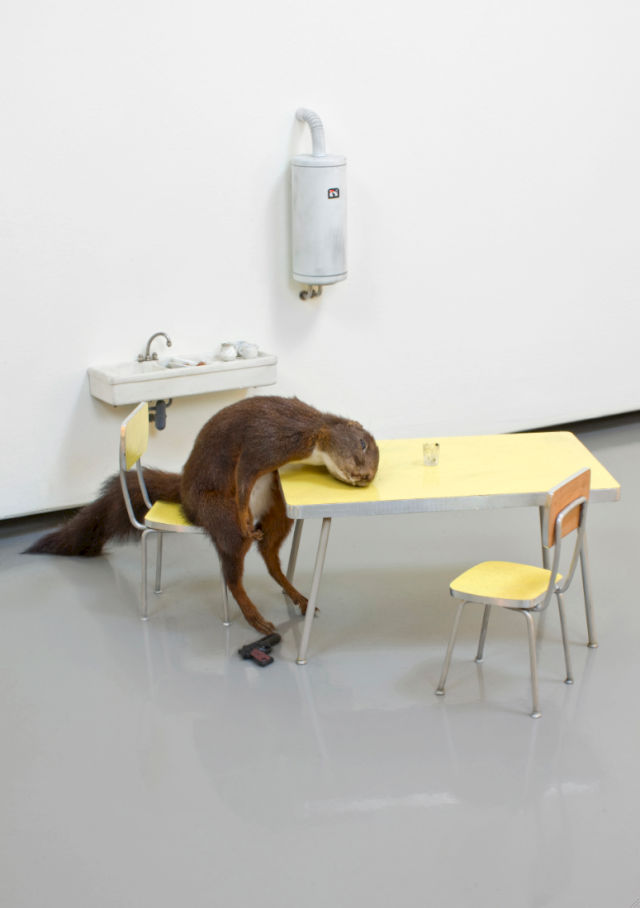
AGNESE ČIVLE
How has the practice of collecting art changed since you began?
PATRIZIA SANDRETTO RE REBAUDENGO
When I started collecting in the early nineties, the art world was smaller, fewer artists and countries had the chance to participate in major exhibitions. The art world today has become truly globalised, with brilliant art being brought to out attention from all parts of the world, and this is a new exciting era for us all.
AGNESE ČIVLE
How have you trained yourself to distinguish good art from bad art? I suppose it wasn’t so easy in the beginning…?
PATRIZIA SANDRETTO RE REBAUDENGO
Well, the more art you see, the more curious you are; the more you start to get a feel for what you like personally. I always say you must train your eyes, see as much as you can, read as much as you can and, above all, go with your own gut instinct.
My real connection with art began on a trip to London in the early nineties to visit some artists’ studios, where I was then introduced to a world of creativity that changed my life. I will always remember talking to artists (young and emerging at that time) – such as Anish Kapoor, Damien Hirst and Julian Opie – about their work, being able to enjoy their works through their eyes. This important experience is part of what shapes my approach to art, and it has made me realize that knowing and talking to the artist about their work is a fundamental part of developing your own taste.
AGNESE ČIVLE
How would you comment on the topic of “women in art collecting”? Do collections created by women differ from those created by men?
PATRIZIA SANDRETTO RE REBAUDENGO
I have always been fascinated by female artists. Women have always played a big role in the art world and still do. When I first started collecting, my collection was divided into themes, and one of these themes was female artists. Although now my interests have broadened, female artists are still an important focus for me. In the Collection there are works by Cindy Sherman, Shirin Neshat, Catherine Opie and Rosemary Trockel, for example, as well as works by more emerging artists such as Goshka Makuga, Paola Pivi, Micol Assael and Lynette Yiadom-Boakye.
We also dedicated a whole year at my foundation to “women in art”, and presented an exhibition of female artists. While we were researching the show, we discovered the interesting fact that collections created by women actually feature more female artists than those being collected by men.
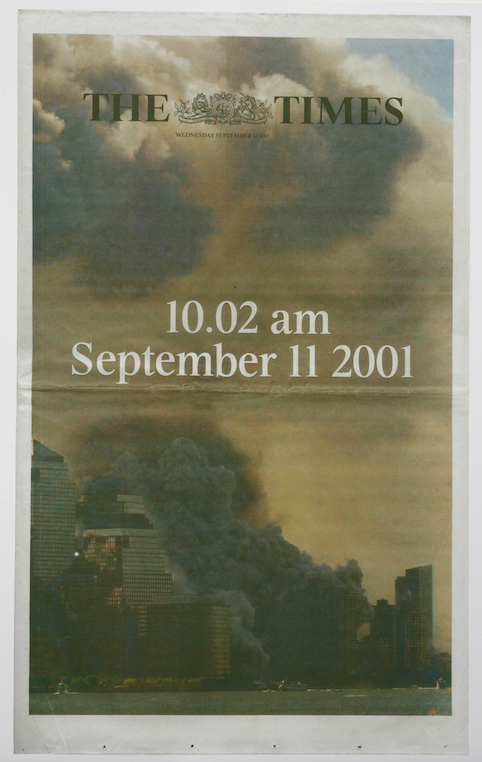




I have never bought a work of art for decoration, and I have never considered the size of a work of art. Many of the pieces that I own could never be installed in my home. I believe I am a spontaneous collector.
PATRIZIA SANDRETTO RE REBAUDENGO
AGNESE ČIVLE
What are the highlights of your collection – the artworks that are very important to you?
PATRIZIA SANDRETTO RE REBAUDENGO
My collection contains many highlights, and there are many works that are important to me. Although all the works in the collection are important to me, I have tended to follow some artists’ careers more closely, especially in the beginning. This is the case with artists such as Maurizio Cattelan, Doug Aitken, and more recently – Ragnar Kjartansson, for example, where I own multiple or very large-scale works, and I have also financed the production of works for international shows such as the Venice Biennale. Particular highlights of the collection are major works by Damien Hirst, Charles Ray, Thomas Hirschhorn, Piotr Uklanski, Pawel Althamer, Hans-Peter Feldmann and Thomas Demand … just to mention some.
AGNESE ČIVLE
What is the very last work that you added to your collection?
PATRIZIA SANDRETTO RE REBAUDENGO
Among the latest works that I have acquired for the collection is the video work Wantee, by Laure Prouvost, with which she won the Turner Prize. Another recent acquisition is a series of five paintings by Jakub Julian Ziolkowski (100 Eyes, 100 Fingers; Emmamah; Genesis; Nocturn, or The Sleep of Reason; and Fears, 2013), which were presented at the 2013 Venice Biennale.
AGNESE ČIVLE
Do you know of, by any chance, the gallery scene in the Baltic states?
PATRIZIA SANDRETTO RE REBAUDENGO
I have yet to go to the Baltic States, but I definitely will. As far as I know, there are many contemporary art centers in this region, and a lot of good artists.
That is why I highly value such fairs as VIENNAFAIR, where the focus on Eastern Europe gives one the chance to finally look at what else is out there besides the big galleries that are always represented at all of the big art fairs. This focus on art coming from a certain part of the world is very relevant to me, because I collect contemporary art that is being created by the new generations. VIENNAFAIR is an opportunity to become acquainted with the galleries and the artists they represent, so that one can start following them from the very source.
As a matter of fact, the Latvian artist Jānis Avotiņš has come to my attention. I already have two of his works in my collection, and I’m considering adding a third. I found out about him thanks to my son, who has just started his way in the art world. My son noticed Avotiņš at the Ibid Projects gallery in London, which is where we also bought our first work by him; we bought the second at the Turin art fair, Artissima.
My collection is not a list of names, but a collection of works. And every single one is important.
PATRIZIA SANDRETTO RE REBAUDENGO
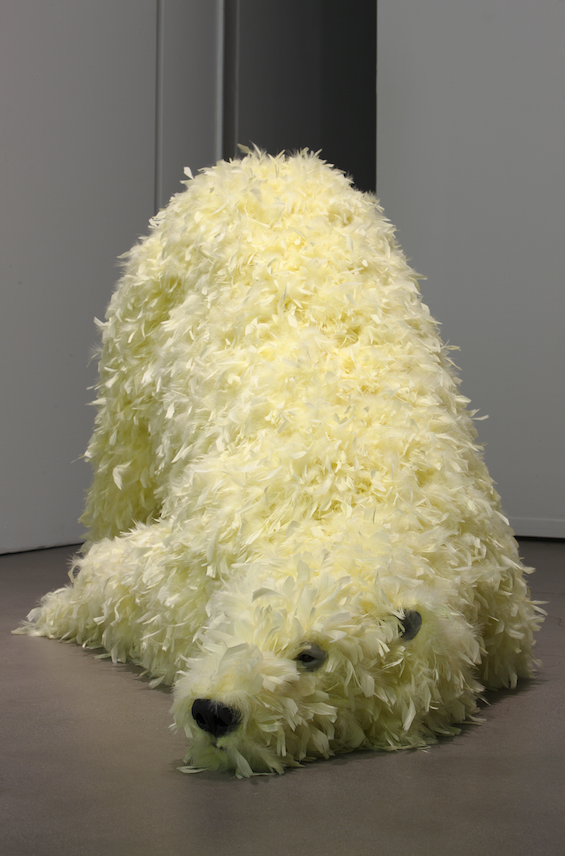
AGNESE ČIVLE
What is it in his works that spoke to you?
PATRIZIA SANDRETTO RE REBAUDENGO
I believe that the paintings by Avotiņš are very powerful. He is an artist worth following! I don’t acquire works just because of a big name; it is important to me to select the right work – one that is representative of the artist’s approach and way of expression, and that fits into the collection as a whole.
AGNESE ČIVLE
Regarding yourself as a collector – are you a rational collector, or an emotional one? What kind of collector should one be?
PATRIZIA SANDRETTO RE REBAUDENGO
I have never, ever bought a work of art for decoration, and I have never considered the size of a work of art. Many of the pieces that I own could never be installed in my home, for example. I am emotional in the sense that I believe I am a spontaneous collector. I know what I like. For me, a work of art must have some strong connection with the time in which it was created. It must say something about the present – be it social or political – which will carry it into the future.
AGNESE ČIVLE
Have you ever bought art just as an investment? And what do you think of collectors who buy art for that purpose?
PATRIZIA SANDRETTO RE REBAUDENGO
I think all collectors have their own reasons for starting a collection, and their own approach to art and what they want from it. I do not sell works; personally, I do not see my collection as a financial investment, nor do I have an interest in the art market.

AGNESE ČIVLE
Could you give us a rough estimate of the value of your collection?
PATRIZIA SANDRETTO RE REBAUDENGO
I wouldn’t be able to do this, as collecting for me has never had anything to do with the market. I have no set budget for acquisitions, and I have no interest in speculation. I do not sell works from the collection, nor do I value the works from a financial point of view. My collection is a deep, personal investment for me.
AGNESE ČIVLE
Have you made any mistakes in assembling your collection, ones that you often think about?
PATRIZIA SANDRETTO RE REBAUDENGO
My collection is not a list of names, but a collection of works. And every single one is important. It is important to acquire works that speak about a particular moment in time, and that indicate a direction for the future.
There have been times when I’ve overlooked the work of a good artist. Yes, it happens, but then my sons – my new generation of collectors – start protesting and remind me. But it’s not possible to buy everything!

When I first started collecting, my collection was divided into themes, and one of these themes was female artists.
PATRIZIA SANDRETTO RE REBAUDENGO

AGNESE ČIVLE
Why do you prefer sculpture and photography? What is it about sculpture and photography – as a medium and as a mode of expression – that attracts you?
PATRIZIA SANDRETTO RE REBAUDENGO
As I mentioned, in the beginning, when I first started collecting, my collection was divided into themes. These were: Italian art, British art (the YBAs), art from Los Angeles, female artists, and photography. It’s true that I have always had a keen interest in photography, and this is the only area of my collection that is not strictly contemporary – with an additional section of historical photographs that retrace the history of the Italian landscape. I believe that the collection is, in a certain way, a reflection of myself, and of my developing tastes in many areas, and not only in photography and sculpture. The collection is still constantly evolving, and consists of works of art in varied media by internationally acclaimed and emerging artists. In recent years, I have been interested in video art, and today there is a part of the collection dedicated to this particular medium. We are currently seeing a return to painting in contemporary art, which has also made me look more closely at painting again, and we will also have an exhibition about it coming up soon, at Fondazione Sandretto Re Rebaudengo in Turin.

AGNESE ČIVLE
Could you expand on the Sandretto Re Rebaudengo Foundation’s direction of activity?
PATRIZIA SANDRETTO RE REBAUDENGO
While developing my private collection, I felt that I wanted to do something more for contemporary artists. Additionally, I wanted to make my collection accessible to the public; I wanted to share it, and not keep it hidden away.
At the time, there weren’t that many public contemporary art institutions in Italy, and so we founded the non-profit institution Fondazione Sandretto Re Rebaudengo.
The foundation produces around three major temporary exhibitions a year, focusing on the new generations of Italian artists and artists from the rest of the world. Works from my collection are rarely shown at the Fondazione, although works from the collection may be included if they fit in with the curatorial concept of a show. So, we organize exhibitions, invite artists to present their projects, and encourage artists to create new works – to produce art. The Fondazione also supports artists by funding the production of works for international exhibitions, such as the Venice Biennale, Documenta, Manifesta, etc.
In addition, the foundation is involved in educational processes that foster an understanding of contemporary art. Every year, the foundation’s educational department in Turin ensures that more than 15,000 children and young people can participate in organized excursions and workshops. Programs for adults have also been implemented, in which professors of art history donate their time to share their knowledge of art – through explaining and taking part in discussions.
A special program has been developed for young curators. Every year, we invite three new curators from the world’s best institutions of higher learning. They spend several months in Italy and meet with artists – everywhere from Turin to Rome and Venice; they visit and study galleries and museums. After their research field trip, they return to Turin where they then use the experience and contacts that they have made to organize and curate an exhibition, with the full support of our staff. That is how we ourselves find out about new and emerging artists in Italy; it also gives us a heads-up on the potential future stars in the fields of curating, art gallery dealing and, perhaps, even museum directing.
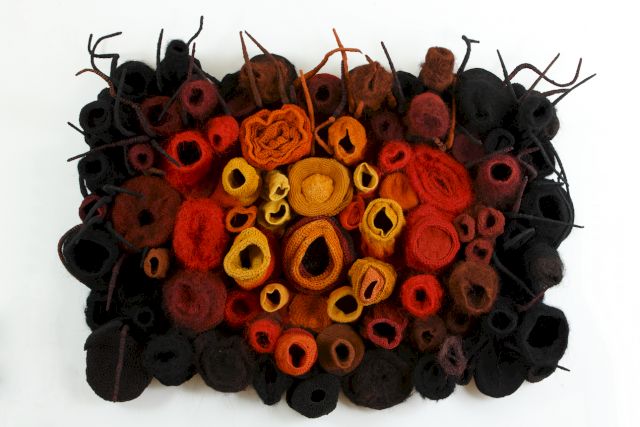
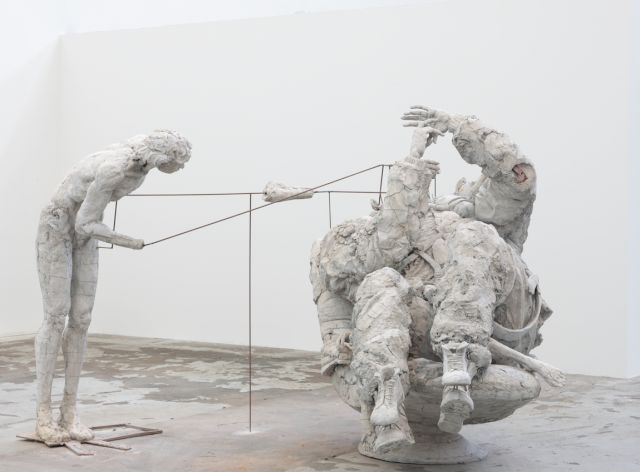
AGNESE ČIVLE
Besides developing an art collection, what other activities are worth mentioning in the context of other Italian collectors?
PATRIZIA SANDRETTO RE REBAUDENGO
This may not be the best of times for Italy, but we have numerous collectors everywhere in Italy, from the country’s very north to its southern-most end. There are institutions that work much like my foundation. Established collectors are being joined by art enthusiasts from the younger generation. We’re hoping for new things from them. For instance, my son Eugenio recently established an innovative on-line platform called Artuner. Eugenio Re Rebaudengo: Artuner offers, for on-line purchase, select paintings and photography works that have been curated by experts. However, unlike, fro example, the amazon.com model, Artuner will simultaneously function as a consultant to those who are interested in both the art world and in putting together a collection of qualitative art. Artuner is more than just a site that sells art – it provides educational content as well, such as information on the works, interviews, and so on. The website features artworks by both well-known artists and newcomers, and it is equally interesting to both new and experienced collectors of art.
AGNESE ČIVLE
Do you have art works exhibited in your home? If so, do you like to invite people into your home to see your collection?
PATRIZIA SANDRETTO RE REBAUDENGO
Yes, part of my collection is installed at home, and the pieces are installed on a rotational basis – apart from a few that are more site-specific. I do open my home to guests from the art world who are visiting Turin for exhibitions, or the art fair, for example, or for groups of patrons from other museums who are collectors themselves, and so have a particular interest. There are always rooms dedicated to Italian art, for example, which I make a point of presenting to visitors. Works will often change in my home also because they are on loan to various museums around the world, or sometimes, because they are being featured in our temporary shows at Fondazione Sandretto Re Rebaudengo.
Collecting for me has never anything to do with the market. I have no interest in speculation. I do not sell works from the collection, nor do I value the works from a financial point of view. My collection is a deep, personal investment for me.
PATRIZIA SANDRETTO RE REBAUDENGO


AGNESE ČIVLE
Can you describe the feeling you get when you have just added a sought-out piece to your collection?
PATRIZIA SANDRETTO RE REBAUDENGO
It is impossible to describe! It is fantastic. I have a Thomas Ruff photograph with blue skies at home, and every morning when I wake up I see my blue skies – it’s wonderful! This piece has become part of my life. When you start to collect, there is no return – it is impossible to stop! Collecting has changed me – I have become more open, more tolerant, and I’m learning to understand what it is that an artist wants to say with his work. I cannot imagine my life without my two sons and my artworks!
AGNESE ČIVLE
What advice do you have for young collectors?
PATRIZIA SANDRETTO RE REBAUDENGO
My advice to young collectors is to see as much art as you can, read as much as you can, let your curiosity get the better of you, and go with your own instincts! And, talk to artists about their work, which in particular will help you on this fascinating journey into contemporary art
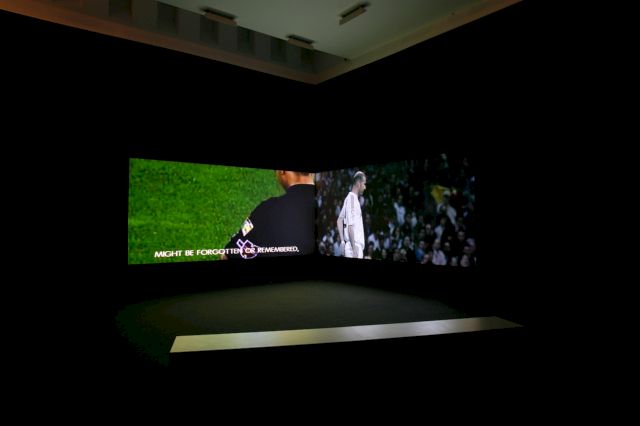
The Fondazione Sandretto Re Rebaudengo is included in the Art Guide.
This interview was originally published in Arterritory. Order the latest issue of the magazine here.